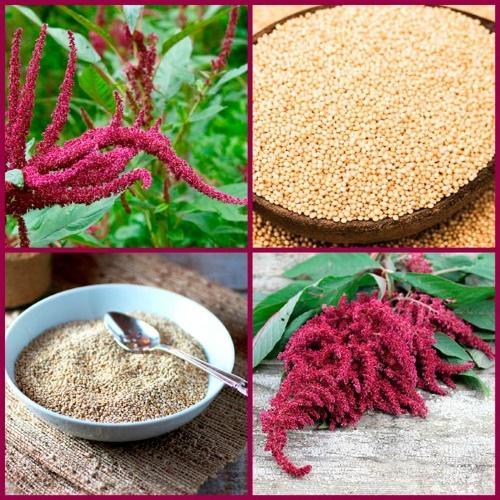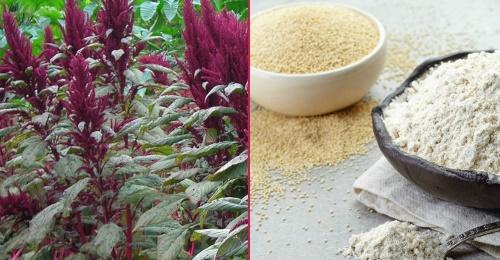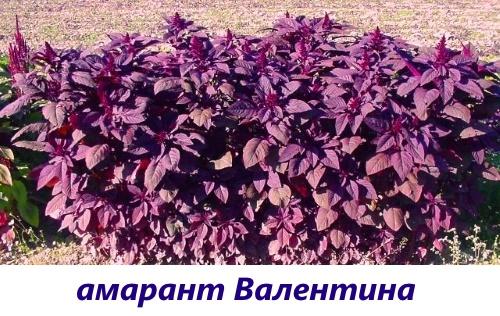Edible amaranth - delicious beauty in your flower bed
 What could be more beautiful than a beautifully flowering bush, which can also be eaten? Amaranth edible or vegetable is one such plant. It will delight you with a decorative look and diversify your diet.
What could be more beautiful than a beautifully flowering bush, which can also be eaten? Amaranth edible or vegetable is one such plant. It will delight you with a decorative look and diversify your diet.
How vegetable amaranth differs from other varieties of culture
In terms of its structure, edible amaranth does not differ from its other relatives. It is a herbaceous, branchy shrub with a thick stem, the height of which depends on the variety. There are crumbs no more than 20 cm, and there are real giants up to 4 m in height. The color of the leaves also depends on the specific species, but they are always oblong, with a pointed tip, slightly rough to the touch. At the end of summer, amaranth blooms, releasing lush inflorescences, consisting of very small flowers of different colors. The inflorescences themselves are most often paniculate.
Vegetable amaranth grown as an annual sowing seeds in open ground or for seedlings. It is unpretentious, can grow on any soil, but prefers well-lit places.

The vegetable part is very high in calories, in addition, it contains almost 12% of dried protein and up to 18% in fresh form.
Young stems and leaves can be used for salads, soups, sauces, drinks. At the same time, amaranth retains its beneficial properties if it is frozen for the winter. And ripe seeds are added to cereals, vegetable cutlets and made into flour.
Amaranth edible - popular varieties
 Compared to the total number of crop varieties (about 200), few varieties of vegetable amaranth are grown. Moreover, only one species is officially recommended for mass cultivation - Valentine's amaranth. You can recognize it by its rich purple leaves and straight inflorescences of the same color. The height of the bush does not exceed 1.7 m, and the leaves can be crumbled into salads after 45 days.
Compared to the total number of crop varieties (about 200), few varieties of vegetable amaranth are grown. Moreover, only one species is officially recommended for mass cultivation - Valentine's amaranth. You can recognize it by its rich purple leaves and straight inflorescences of the same color. The height of the bush does not exceed 1.7 m, and the leaves can be crumbled into salads after 45 days.
There are a few more plants that are not only beautiful, but also quite tasty and healthy. Among them, it is worth highlighting the following amaranths:
- Strong guy. Differs in large and juicy light green leaves and straight green - brown inflorescences. One of the highest yielding varieties in terms of seeds. From 1 square meter of planting, you can take 3 kg of light yellow seeds.

- White list. A dwarf variety that does well at home. The height of the bush is no more than 20 cm, the foliage is light green, the panicles are white.

- Opopeo. Stem up to 2 m in height with a diameter of almost 1 m. Leaves are large, bronze, spike-shaped inflorescences, ruby.

- In memory of Kovas. Mid-season variety about 1 m high with large, dark green leaves and brownish inflorescences.
